Publications on Children
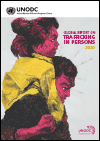
Resource | Publications,
The report comes at a time when global suffering has vastly increased vulnerabilities to trafficking. Extreme poverty is expected to rise for the first time in decades, with the continuing COVID-19 crisis casting a long shadow over our societies and economies. With many millions more women, men and children in every part of the world out of school, out of work, without social support and facing diminished prospects, targeted action is urgently needed to stop crimes like trafficking in persons from adding to the pandemic’s toll.
The report draws on data from 148 countries and explores issues of particular relevance in the current crisis, including the impact of socio-economic factors, drivers of child trafficking and trafficking for forced labour, and traffickers’ use of the internet.
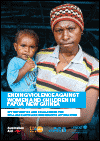
Resource | Publications,
UNICEF East Asia and Pacific Regional Office (EAPRO), UNFPA Asia Pacific Regional Office (APRO), and UN WOMEN Regional Office for Asia and the Pacific (ROAP) partnered on a regional, multi-country initiative in Cambodia, Papua New Guinea, the Philippines and Viet Nam to explore opportunities and challenges for better coordination, integration and collaboration for VAW and VAC policies, action plans, programs and services in the East Asia and Pacific region, focusing on violence that occurs within spaces and relationships of trust (e.g., intimate or dating relationships, family violence, school violence).
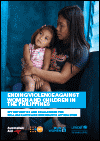
Resource | Publications,
UNICEF East Asia and Pacific Regional Office (EAPRO), UNFPA Asia Pacific Regional Office (APRO), and UN WOMEN Regional Office for Asia and the Pacific (ROAP) partnered on a regional, multi-country initiative in Cambodia, Papua New Guinea, the Philippines and Viet Nam to explore opportunities and challenges for better coordination, integration and collaboration for VAW and VAC policies, action plans, programs and services in the East Asia and Pacific region, focusing on violence that occurs within spaces and relationships of trust (e.g., intimate or dating relationships, family violence, school violence).
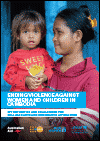
Resource | Publications,
UNICEF East Asia and Pacific Regional Office (EAPRO), UNFPA Asia Pacific Regional Office (APRO), and UN WOMEN Regional Office for Asia and the Pacific (ROAP) partnered on a regional, multi-country initiative in Cambodia, Papua New Guinea, the Philippines and Viet Nam to explore opportunities and challenges for better coordination, integration and collaboration for VAW and VAC policies, action plans, programs and services in the East Asia and Pacific region, focusing on violence that occurs within spaces and relationships of trust (e.g., intimate or dating relationships, family violence, school violence).
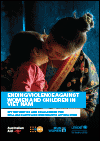
Resource | Publications,
UNICEF East Asia and Pacific Regional Office (EAPRO), UNFPA Asia Pacific Regional Office (APRO), and UN WOMEN Regional Office for Asia and the Pacific (ROAP) partnered on a regional, multi-country initiative in Cambodia, Papua New Guinea, the Philippines and Viet Nam to explore opportunities and challenges for better coordination, integration and collaboration for VAW and VAC policies, action plans, programs and services in the East Asia and Pacific region, focusing on violence that occurs within spaces and relationships of trust (e.g., intimate or dating relationships, family violence, school violence).
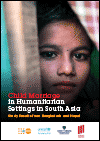
Resource | Publications,
Every child has a right to a childhood where they can play, where caregivers ensure their wellbeing, and where they are protected. Child marriage prevents this from happening and can result in serious human rights violations. In South Asia there are an estimated 285 million child brides. Fifty-nine per cent of women aged 20–24 in Bangladesh were married under the age of 18, 40 per cent in Nepal and 27 per cent in India. While the rates of child marriage are decreasing in the region, the vulnerability and insecurity that arises during humanitarian crises threatens to undermine this progress.
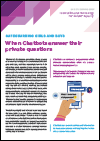
Resource | Publications,
The internet has become one of the primary sources of community and support for children and adolescent girls and boys, and they increasingly turn to it for information about sensitive issues such as sexuality, relationships, or health. Mobile phones and other digital devices allow them to find answers to their questions in relative privacy, anytime and anywhere. Chatbots are among the latest digital products being developed by those seeking to serve children and adolescents when it comes to digital sexuality education.

Resource | Publications,
A new UNICEF publication, Research on Violence against Children during the COVID-19 Pandemic: Guidance to inform ethical data collection and evidence generation, addresses key questions on generating VAC evidence that may arise during the pandemic to guide those considering conducting research and data collection on VAC during COVID-19.
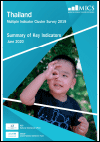
Resource | Publications,
The Global Multiple Indicator Cluster Survey (MICS) Programme was developed by UNICEF as an international multi-purpose household survey programme to support countries in collecting internationally comparable data on a wide range of indicators on the situation of children and women.
The National Statistical Office of Thailand (NSO) conducted its first MICS, which was part of MICS3 programme, in 2005-06. The current MICS is the fourth round under MICS6 programme. The survey provides one of the most important sources of alternative information to help monitor the progress of achieving the Sustainable Development Goals (SDGs).
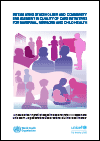
Resource | Publications,
Integrating stakeholder and community engagement in quality of care initiatives for maternal, newborn and child health was developed to guide policy makers and programme implementers on how stakeholder and community engagement can be incorporated into quality improvement initiatives for maternal, newborn and child health. It specifically provides operational guidance through concrete steps and actions on how quality improvement teams at national, district and facility level, can ensure collaborative engagement with relevant stakeholders and communities during in all steps quality improvement implementation.





